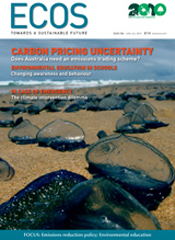
|
Published:
Weeding out the positive from climate change
Climate change-driven higher temperatures and reduced rainfall in South Australia could prompt a period of ‘weed change’ across the state, according to a new CSIRO report.
The report, Climate Change and Invasive Plants in South Australia, provides climate projections to 2080 and shows that weeds may shift in range across the state. Thirteen weed species are profiled, and options for managing them under climate change are canvassed.
Lead author, Darren Kriticos, works through CSIRO’s Climate Adaptation Flagship. He says the climatic conditions indicated by future climate scenarios could have a dramatic effect on the distribution and abundance of weeds. In most cases, existing weed problems in northern areas of South Australia will have the opportunity to shift further south.
‘Landholders may face having to deal with species that they have no local knowledge of’, says Kriticos.
But, he also says there is some good news, in the form of new opportunities to tackle existing weed problems.
‘As the climate warms, some of the weeds that prefer cooler conditions may become less of a problem. If we can prevent their replacement with other weeds, we may be able to put the squeeze on some weeds, particularly the notoriously destructive bridal creeper and Scotch broom.’
Weeds are a major threat to Australia’s biodiversity and agricultural enterprises, because they out-compete native species and contribute to land degradation. Weeds cost Australia more than $4 billion a year in control measures and lost production.



